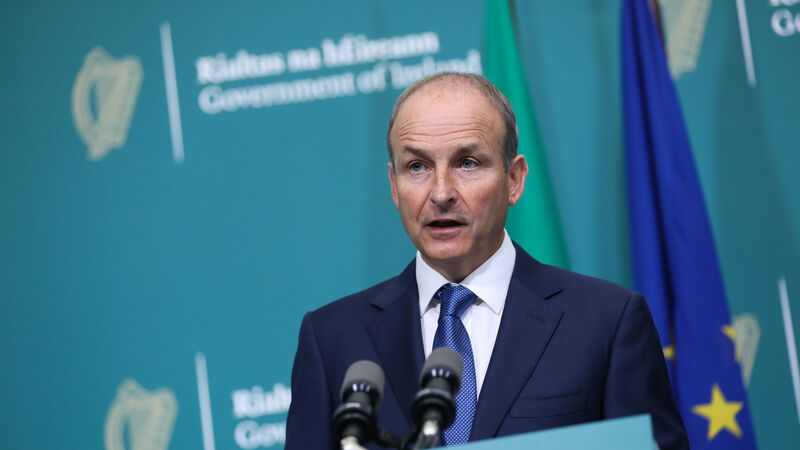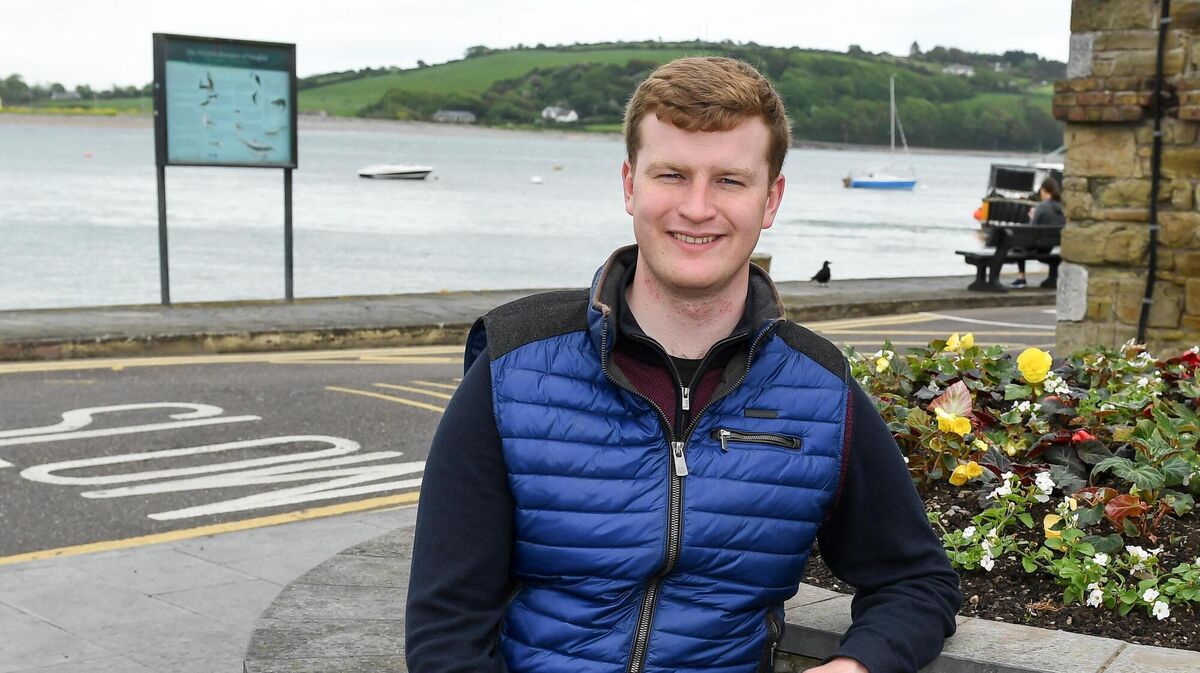Daniel McConnell: Can Fianna Fáil be saved from itself?

Taoiseach Micheál Martin is under pressure from his party and from voters. File Picture.
It has truly been remarkable to have witnessed the brutal decline of Fianna Fáil over the past 15 years since I first passed through the gates of Leinster House.
I started up there just ahead of the 2007 General Election.
The party had been in office since 1997 and its leader Bertie Ahern appeared unassailable.
Across the country, it was normal to see two Fianna Fáil TDs in three-seat constituencies or even three in a five-seater.
They were omnipresent.
The dominant political force of 20th Century Ireland, under Éamon de Valera, Sean Lemass, Jack Lynch, Charlie Haughey, Albert Reynolds and Ahern, Fianna Fáil had been in power almost uninterrupted for much of the time since the State was established.
The departure of Ahern as leader came as the Celtic Tiger crashed, and his successor Brian Cowen led the country into bankruptcy and into the clutches of the Troika.
Following three grueling years of austerity, in 2011, the electorate dumped the party out of office. It dropped from 77 Dáil seats to just 19.
What had been the greatest political movement in history of the State was now reduced to a minority political party.
“The party was a pariah, we were toxic at the time,” Micheál Martin later said.
“2011 was existential in terms of the party’s future. We had debts of €4m."
The party faced a major crisis at that time with many questioning whether it had a future. What did it stand for? Who would it represent?
Ten years on, those questions remain unanswered and are still as valid now as they were then.
The party gathered for the first time in person in over a year in the Slieve Russell Hotel in Cavan this week. The main findings of an internal report into its 2020 General Election disaster were, in one way blindingly obvious, but in another failed to fully address the fundamental questions facing the party.
The 40-page Fleming report, presented to party members this week, 18-months after the election, sought to highlight many practical issues which must be addressed if the once all-dominant force in Irish politics is to have a future.
Yes, problems with social media, a lack of a manifesto, and other organisational issues are valid, but they are side issues to the core problem.
Key to that is another question: can Fianna Fáil be saved from itself?
The reasons for Fianna Fáil’s demise at that point have been well documented but 10 years on, what has not been properly explored is out of the ruins of that wipe-out, just what sort of party is left.
Just what does Fianna Fáil think it is and more importantly what kind of party does it see itself being into the future.
Since 2011, the party has struggled to figure out what it wants to be.
In fact, it has been a regular criticism from within.
The most alarming aspect of the Fleming Report in relation to identity is that ten years into its new reduced disposition, it is no clearer on that key point.
What does it stand for? Who does it seek to represent? What are its key objectives?
The Martin years have seen a constant internal battle between its conservative rural wing, which dominates the parliamentary party, and its more liberal wing.
Such divisive battles have long stymied the party from modernising and attracting younger more urban voters which have departed wholesale.
After a terrible campaign during the 2020 General Election and the Dublin Bay South by-election drubbing, Fianna Fáil cannot simply afford another one if they are to remain as a viable force in Irish politics.
Take those young voters, who have no decent job security, no chance of owning a home and will have no pension worth talking about. Why would they vote for Fianna Fáil?
Such a disconnect with younger voters was raised by the Dáil’s youngest TD James O’Connor, who warned his party is in real trouble.
“Listen to me, Fianna Fáil is disintegrating,” he declared at a parliamentary party meeting before the summer recess.
During a sharp contribution, the 23-year-old Cork East TD set out why in his view the party is “extremely unpopular” in areas of the country and also among younger voters.
O’Connor is correct to be worried. Examining a recent Irish Times/Ipsos MRBI national opinion poll’s underlying detail reveals a great deal more as to where Fianna Fáil now stands.

What was fascinating is that Fianna Fáil is not the most popular across any age category, gender, social class or geographical location. Not one. For example, in terms of social class, Fianna Fáil support among the highest social class professional voters at 18% compares woefully with Fine Gael’s 34%.
It too can no longer claim to be the party of the working man, it seems, as the most popular party among the working classes is Sinn Féin. In terms of gender, Fianna Fáil is the third choice among men and women.
In terms of the geographical breakdown, Fianna Fáil is third in Munster, third in Connaught/Ulster, third in Leinster outside Dublin, and a distant third in Dublin. In Dublin, the poll showed that while Sinn Féin commanded 34% of the first preference vote and Fine Gael got 27%, Fianna Fáil got just 15%.
Even at the think-in, when asked about what the party stands for, the mantra of Fianna Fáil being the so-called ‘Republican Party’ was the primary response, a phrase so outdated it would make Éamon Ó Cuív seem contemporary.
What sort of meaning would that phrase have to anyone under the age of 40? None.
While for so long, being the great catch-all party was Fianna Fáil’s greatest strength, it now appears it could be its greatest weakness.
The decision to align itself with Fine Gael by way of the confidence and supply deal may have been in the national interest, it certainly was not in the interests of Fianna Fáil.
They got all of the blame for the mistakes made by Fine Gael and their band of independent colleagues and none of the credit. It was the worst of both worlds and Martin's decision to extend it in hindsight was a mistake.
That squeeze is proving very costly.
If, as appears to be the case, Fianna Fáil seeks to be the great centrist bulwark against these two extremes, they have made a shocking fist of it so far in etching out that space.
Fine Gael, under Leo Varadkar, has repeatedly stolen good news stories from under the nose of Martin and continues to get away with it.
It could be, perhaps, that when confronted with the prospect of Micheál Martin being the Taoiseach, the Irish public, or a majority of it, said very clearly — no way.
Perhaps many Irish people have simply made up their mind on Martin and feel as long as he is leader, they will stay away from the party.
Such a belief is strong among many of the internal agitators, who have made it known they want to see the back of their leader, sooner rather than later.
The big problem is that while they may be unhappy, there is no clear alternative leader in waiting who looks willing or able to take Martin out.
While the Fleming report concluded that the party allowed itself to be out of step with modern thinking on the abortion issue in 2018, as Prof Gary Murphy of DCU put it this week, Fianna Fáil has been a socially conservative party, by and large, since its inception, so is it reasonable to demand it change now.
That is the crux of the dilemma for the party which still has no idea where it wants to go.

















![Johnny_Stephens_Photography-02-425A6831-Edit[1].jpg Restaurant review: The Ivy Asia is an assault on all five senses — I hated it](/cms_media/module_img/9752/4876311_6_teasersmall_Johnny_Stephens_Photography-02-425A6831-Edit_5b1_5d.jpg)
